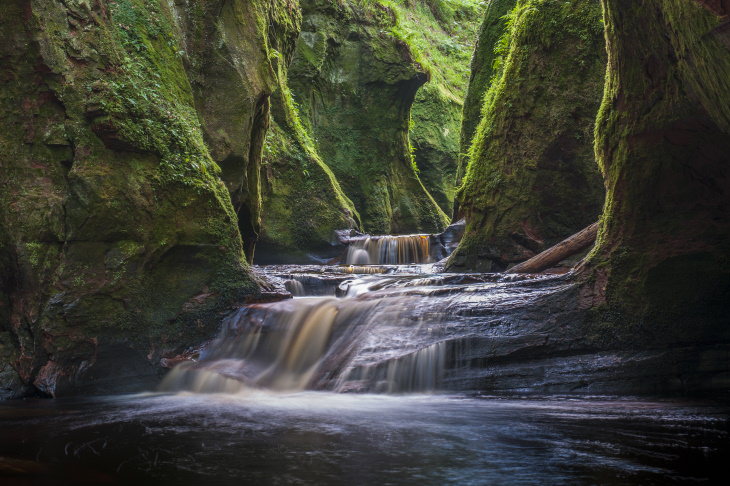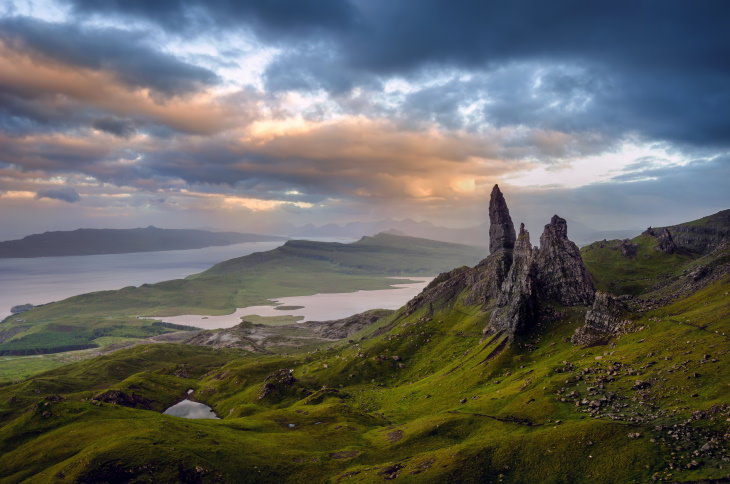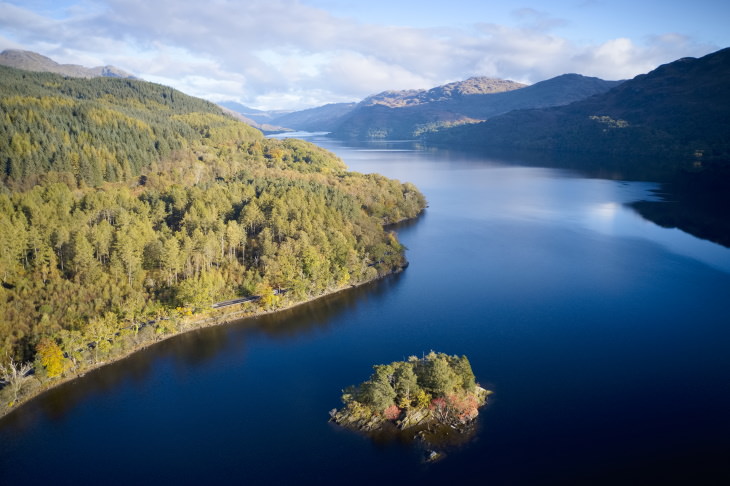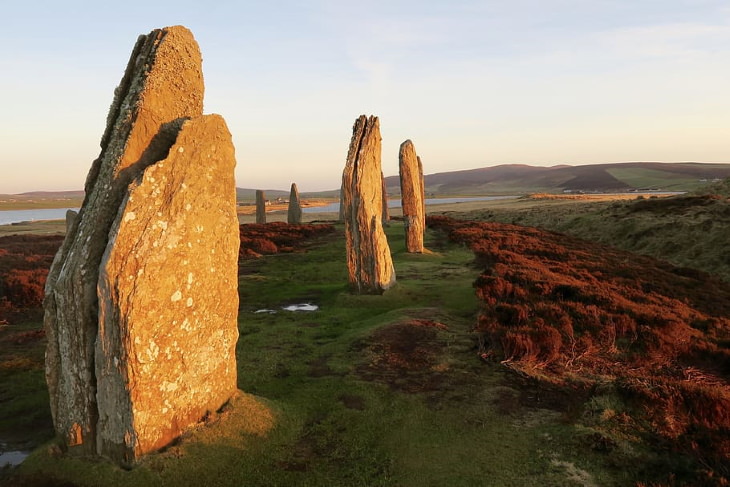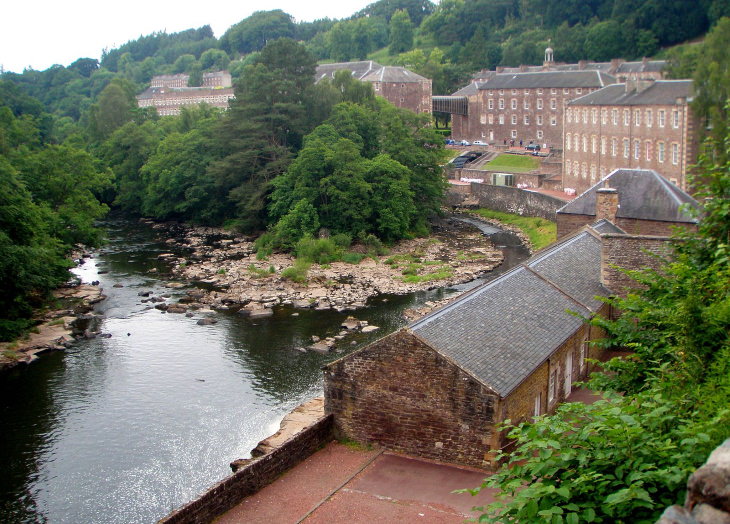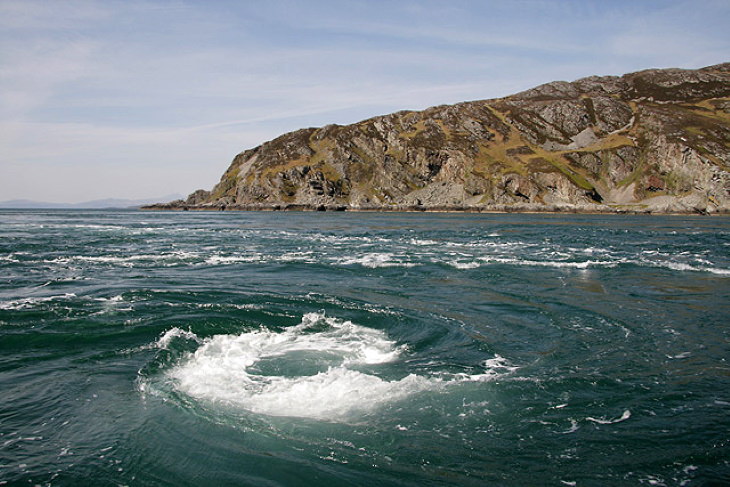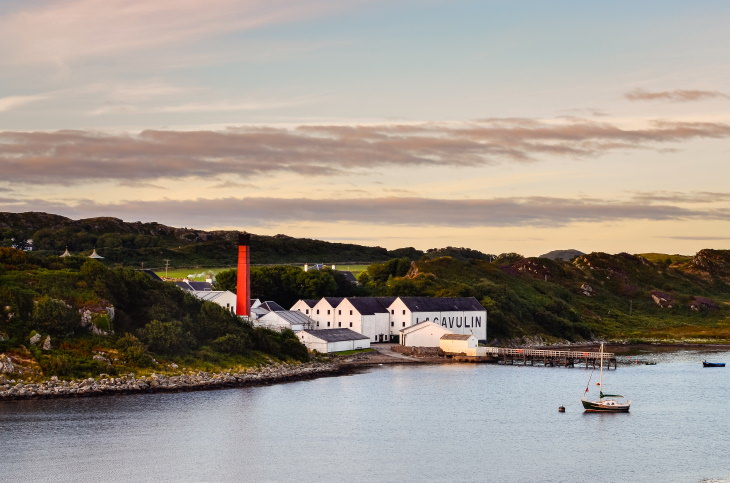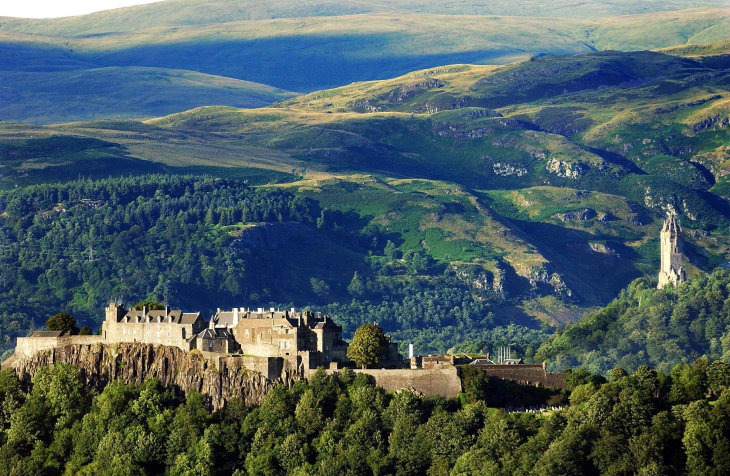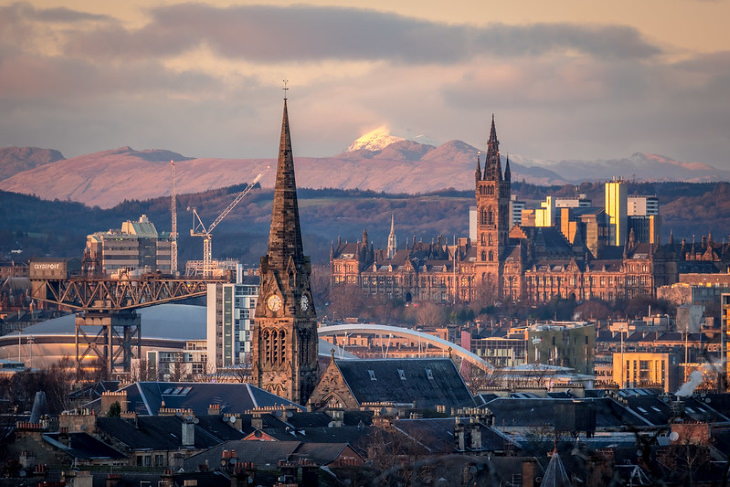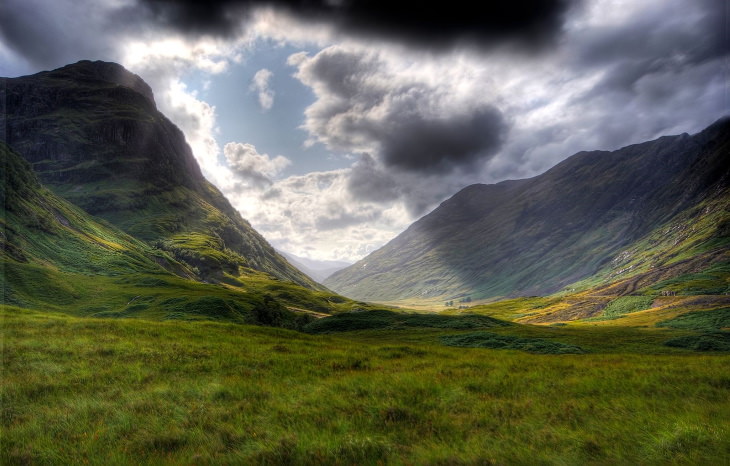1. Edinburgh
The capital of Scotland is considered to be one of the most beautiful cities in the world. With the abundance of architecture that dates back to various periods in history, we can see why that is. One could wander among the historic homes and soak in the city’s unique atmosphere for hours.
But there’s one site no history buff can skip while visiting the Scottish capital - the Medieval Edinburgh Castle. Towering above the city, the 11th-century castle is located on top of a mountain. Visitors to Edinburgh Castle will enjoy a beautiful vista of Edinburgh as well as a fascinating tour through Scottish history. Learn more about the Scottish capital here - Exploring the Ancient Scottish City of Edinburgh.
2. Finnich Glen
For a completely different type of experience, travel to the village of Croftamie on the A809 road. Before you reach the village, you’ll see a small stone bridge called the Finnich Bridge. Beneath the bridge, you’ll find ancient steps that lead to a jaw-dropping natural gorge known as Finnich Glen.
The 70-feet-deep gorge features steep cliffs covered in green moss that create a stark contrast against the water that’s tinted red by the sandstone of the surrounding cliffs. Within the alleyways of the gorge, there’s a mysterious round rock formation known as the Devil's Pulpit. Legend has it that this place was used in ancient Druid rituals centuries ago. Be as it may, but the atmosphere here is certainly fairytale-like!
3. Isle of Skye
The biggest of the Inner Hebrides islands, the Isle of Skye is the primary destination for travelers who love exploring nature. From striking cliffs rising from the sea to fairy waterfalls, and lush green mountains full of unusual rock formations, this island has it all. It’s easy to see why so many tourists flock up to visit this island every year.
Start your trip in the town of Portree, and go hiking across the Cuillin Hills to get the full picture of the isle. Kilt Rock and the Old Man of Storr rock formation are two of the best destinations for hikers.
4. Isle of Arran
Another Scottish island, albeit much smaller than Skye, is the Isle of Arran. This little isle is worth a special mention because it is said to encompass all of the Scottish landscape in one neat package, which is why it is known under the name “Scotland in Miniature.”
Cozy fishing villages, sandy beaches, steep mountains, and ancient castle ruins are just a few of the best features of this wonderful island. Brodick Castle is a popular tourist destination because it features an authentic interior from the Medieval period and an ancient dwelling that date all the way back to the Bronze Age (1400-1300 BC).
5. Loch Lomond
Think of Loch Lomond as Loch Ness’s bigger sister. The Scottish lake is the largest body of fresh water in the United Kingdom and one of the most picturesque travel destinations you’ll ever see. The romantic lake has inspired many famous writers. Walter Scott, for example, called Loch Lomond the "Queen of Scottish Lakes." Hike near Loch Lomond, bike around the lake, or explore it by boat - you’ll have a great time either way. One of Scotland’s best wildlife and nature preserves - The Trossachs National Park - also borders on Lake Lomond.
6. Ring of Brodgar
We only hear about Stonehenge in history documentaries, but there are actually several stone circles scattered across the UK. The third biggest of such megalithic structures, called the Ring of Brodgar, can be found on the Orkney archipelago in Scotland. The Ring of Brodgar is a circle of stones of varying heights (between 7 and 15 feet tall) 341 feet in diameter that dates back to 2500-2000 BC.
Like its famous cousin - Stonehenge - scientists aren’t sure why the Ring of Brodgar was created or what purpose it had served. Visitors will find countless other historical landmarks on Orkney, including the best-preserved Neolithic village in Europe (from 3100 BC) and an ancient burial site abandoned from 2500 BC.
7. New Lanark
This seemingly ordinary village is one of only six UNESCO World Heritage Sites in Scotland. Standing on the River Clyde, this village was one of the most progressive places in Europe at the time of its conception in 1786. The village was built by Robert Owen, who envisioned the cotton mill settlement as an industrial utopia.
The village is historically important because Owen's ideas played a key role in the development of the Industrial Revolution and became a model for an industrial community. Over 2,000 workers lived in the village, and the mill was operational until 1968. All of the structures created by Owen survive to this day. Visitors can book excursions while here as well.
8. Corryvreckan Whirlpool
This next travel destination is not located on land. The Corryvreckan Whirlpool is the third-largest whirlpool on Earth, and it is located between the Jura and Scarba islands. When the strong Atlantic currents flow in-between the two islands, they speed up to 10 miles an hour and create a whirlpool and other wave phenomena that can be observed on the sea surface. Boat tours to the Corryvreckan Whirlpool depart from Ardfern, and they also pass by a seal colony and a sea eagle nesting site.
9. The Shetland Islands
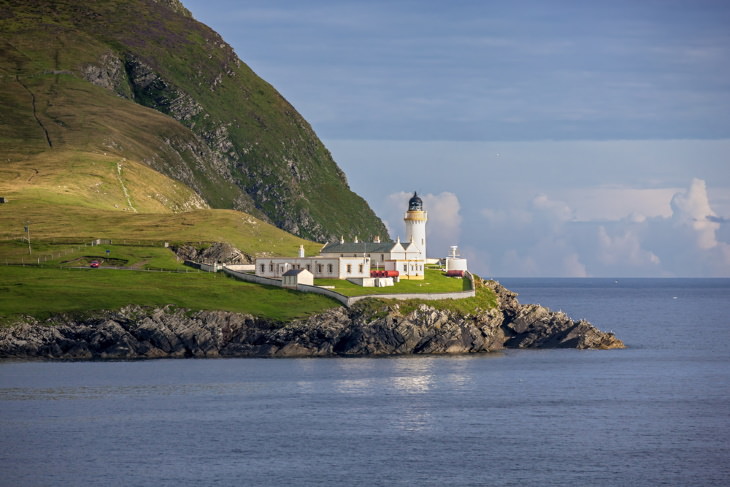
Another point of interest in Scotland is the Shetland Island archipelago - the northernmost point of the UK. Located in the Northern Atlantic, these islands are in-between Norway and Great Britain, and you can tell! For example, the charming villages are made up of colorful houses that are oh so reminiscent of Norse architecture. In the summertime, the archipelago is the haven for visitors who want to explore its diverse wildlife and one-of-a-kind archaeological sites that date all the way back to 4320-4030 BC. In January, the Shetland Isles host an ancient Viking fire festival called Up Helly Aa.
Related Article: 16 Stunning Places In Beautiful Scotland
10. Isle of Islay
Some Scottish isles are for nature lovers and for history buffs, but others are best suited for those who can appreciate some fine whiskey. Given that whisky is the country’s national drink and one of Scotland's greatest exports, the idea of traveling all the way to Scotland just to savor the drink doesn’t sound all that odd.
Scotland has at least 500-year-long history of distilling this drink, and even the English word whisky itself is believed to come from the Gaelic word uisce (or uisge) meaning "water." But let’s go back to Islay. The picturesque islands are home to eight single malt distilleries and an array of tours that include excursions through the distilleries and other sites on the isle are available to visitors.
11. Stirling
The historic city of Stirling is located midway and slightly north between Glasgow and Edinburgh, and it’s an excellent place to settle down during your travels if you’re not a fan of the hustle and bustle of the big city. The Medieval city has all the historic charm of Edinburgh but isn’t nearly as overcrowded.
One of Scotland’s biggest and best-preserved castles - the Stirling Castle - is located on a hill above the city. Next to the castle, on the Abbey Craig outcrop, you will see the beautiful Victorian-era tower known as the National Wallace Monument that commemorates Sir William Wallace, a 13th- and 14th-century Scottish hero.
11. Fingal’s Cave
The sculptural beauty of Fingal’s Cave leaves an unforgettable impression on anyone who has seen it live. The 270-feet-deep cave is located on the uninhabited island called Staffa, rising from the sea as an accumulation of edgy basalt pillars. The cave has been a popular tourist destination since at least the 1800s and continues to enchant visitors with its unique structure to this day.
The famous composer Felix Mendelssohn was inspired by his visit to this cave to create The Hebrides Overture. Queen Victoria, poets William Wordsworth and John Keats, and painter J. M. W. Turner are just a few other famous visitors of Fingal’s Cave.
13. St Andrews
St Andrews is a big name in the world of golf. After all, it’s the home of the oldest golf course and golf club in the world, as well as the British Golf Museum, so playing here is considered a great honor and privilege. But make no mistake - those who don’t share the love of golf will also enjoy a trip to St Andrews. The town also boasts of having Scotland’s oldest university, an ancient castle, and the ruins of what was once Scotland's largest cathedral and most outstanding church.
14. Glasgow
The last but certainly not the least city on our list is Glasgow. Once a major port and industrial center, Glasgow has reinvented itself as a cultural center in recent years. The city hosts many festivals, classical music and opera performances, and art exhibitions, and it’s fun to explore all year round. Fans of Victorian and Art Nouveau architecture will love walking through the historical center of the city. The Glasgow Cathedral, the waterfront, and the Riverside Museum are all destinations everyone ought to visit.
15. Glencoe Valley
A trip to Glencoe Valley is considered to be Scotland’s most scenic hiking experience. Visiting the stunning mountain valley, expect to see steep mountains covered in bright green foliage with mountain lakes and waterfalls scattered across the serene Alpine landscape. You can get to Glencoe valley from Fort William, a charming resort town famous for its ancient steam train route that goes all the way through the Scottish Highlands.
Share this article with those who love traveling!


